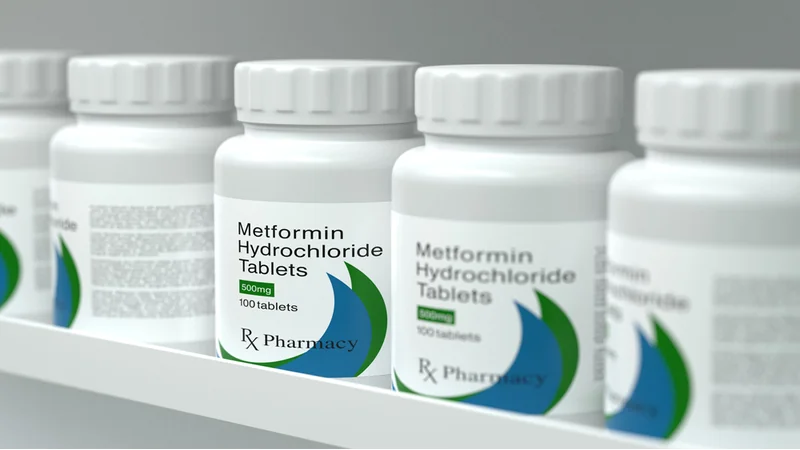Researchers publishing in Aging Cell have documented a human clinical trial showing that metformin reduces atrophy caused by long periods of bed rest.
A common problem and a well-known diabetes drug
Long periods of disuse cause muscles to atrophy and accelerate the age-related muscle wasting known as sarcopenia [1]. Strength training is the accepted treatment for this problem, but with aging, it becomes less effective [2]. Therefore, more fundamental biological interventions are needed to combat atrophy-related frailty.
Like rapamycin, the diabetes drug metformin has gotten a large amount of attention within the longevity community, and previous research has shown that it affects a wide variety of age-related biomarkers in human beings [3]. These researchers were particularly interested in its effects in preventing cellular senescence [4], as they have previously shown it to prevent senescence-related atrophy in human cells in vitro [5].
Of course, cells under a microscope don’t always behave like cells in people, which is why the researchers followed up with this human clinical trial.
Effective in glucose-tolerant older adults
A total of 20 people with an average age of almost 70 participated in this experiment. As metfomin is a diabetes drug, this trial excluded people with diabetes along with a wide variety of other diseases, including kidney disease.
Metformin or placebo was administered for two weeks and still given during five days of bed rest, after which dosing was halted. Caloric intake was strictly controlled during the resting period. Muscle biopsies were conducted throughout this experiment, including a week after the bed rest.
Metformin did not seem to affect the total number of muscle fibers. However, there were more thick fibers and fewer thin fibers in the metformin group compared to the control group. Accordingly, total muscle size, as measured by MRI of the leg, was greater in the metformin group.
Many other measurements
The researchers included some negative results in this study. Capillaries, satellite cells, and macrophages are all part of the muscle remodeling process and are affected by sarcopenia [6]. Capillaries were unaffected by metformin or bed rest. The number of satellite cells was found to be reduced by metformin, but this number was not affected by bed rest and recovery in either group. Macrophages were increased after bed rest, but they were statistically unaffected by metformin.
Collagen deposition, which is increased by bed rest, was sharply affected by metformin. Every member of the placebo group had increased collagen deposition at the end of the study. The metformin group had considerably more mixed results, with some members having less collagen deposition as measured by Sirius Red staining.
While the senesence markers p21 and p16 did not differ in muscle progenitors between the treatment and control groups, the metformin group had significantly less of these markers in fibro-adipogenic progenitor cells in muscle tissue. Senescence in these cells was correlated with increased collagen deposition.
These results were confirmed in RNA analysis. After bed rest, the placebo group had strongly upregulated senescence-related and collagen-related transcriptions and transcriptional pathways compared to the metformin group.
An informative study
This is a human clinical trial, and the results were above the threshold of statistical significance. Therefore, despite the relatively small sizes of the tested groups, it serves as strong evidence that metformin is effective against disuse-relate atrophy in older people, and that this is very likely to be due to its effects against cellular senescence in some cell types. However, this trial also showed that metformin doesn’t affect everything related to atrophy and muscle aging. It is simply one tool in the toolkit against age-related diseases.
Literature
[1] Kehler, D. S., Theou, O., & Rockwood, K. (2019). Bed rest and accelerated aging in relation to the musculoskeletal and cardiovascular systems and frailty biomarkers: a review. Experimental gerontology, 124, 110643.
[2] Aagaard, P., Suetta, C., Caserotti, P., Magnusson, S. P., & Kjær, M. (2010). Role of the nervous system in sarcopenia and muscle atrophy with aging: strength training as a countermeasure. Scandinavian journal of medicine & science in sports, 20(1), 49-64.
[3] Kulkarni, A. S., Gubbi, S., & Barzilai, N. (2020). Benefits of metformin in attenuating the hallmarks of aging. Cell metabolism, 32(1), 15-30.
[4] Fang, J., Yang, J., Wu, X., Zhang, G., Li, T., Wang, X. E., … & Wang, L. (2018). Metformin alleviates human cellular aging by upregulating the endoplasmic reticulum glutathione peroxidase 7. Aging Cell, 17(4), e12765.
[5] Petrocelli, J. J., de Hart, N. M., Lang, M. J., Yee, E. M., Ferrara, P. J., Fix, D. K., … & Drummond, M. J. (2023). Cellular senescence and disrupted proteostasis induced by myotube atrophy are prevented with low-dose metformin and leucine cocktail. Aging (Albany NY), 15(6), 1808.
[6] Larsson, L., Degens, H., Li, M., Salviati, L., Lee, Y. I., Thompson, W., … & Sandri, M. (2019). Sarcopenia: aging-related loss of muscle mass and function. Physiological reviews, 99(1), 427-511.





